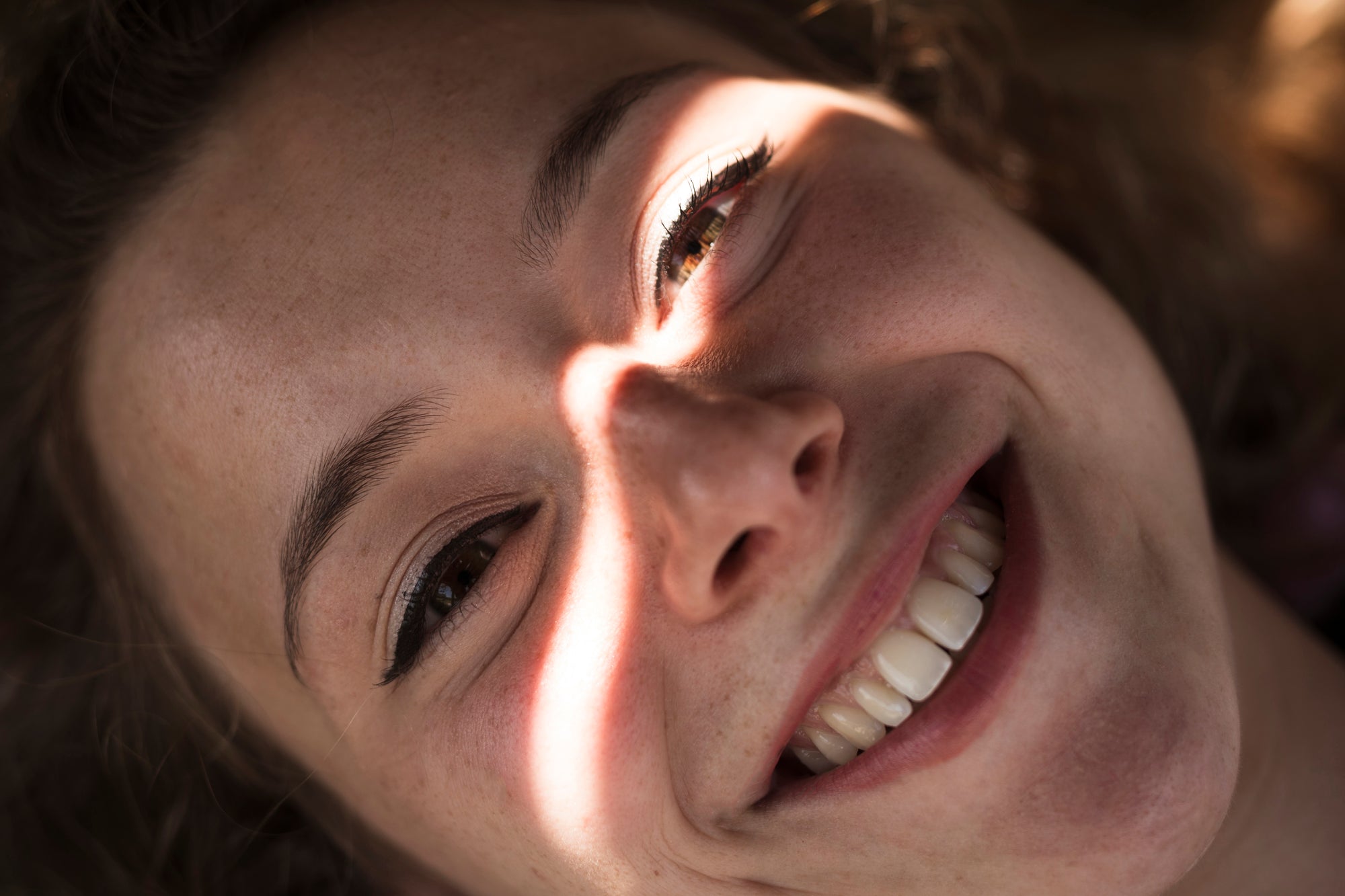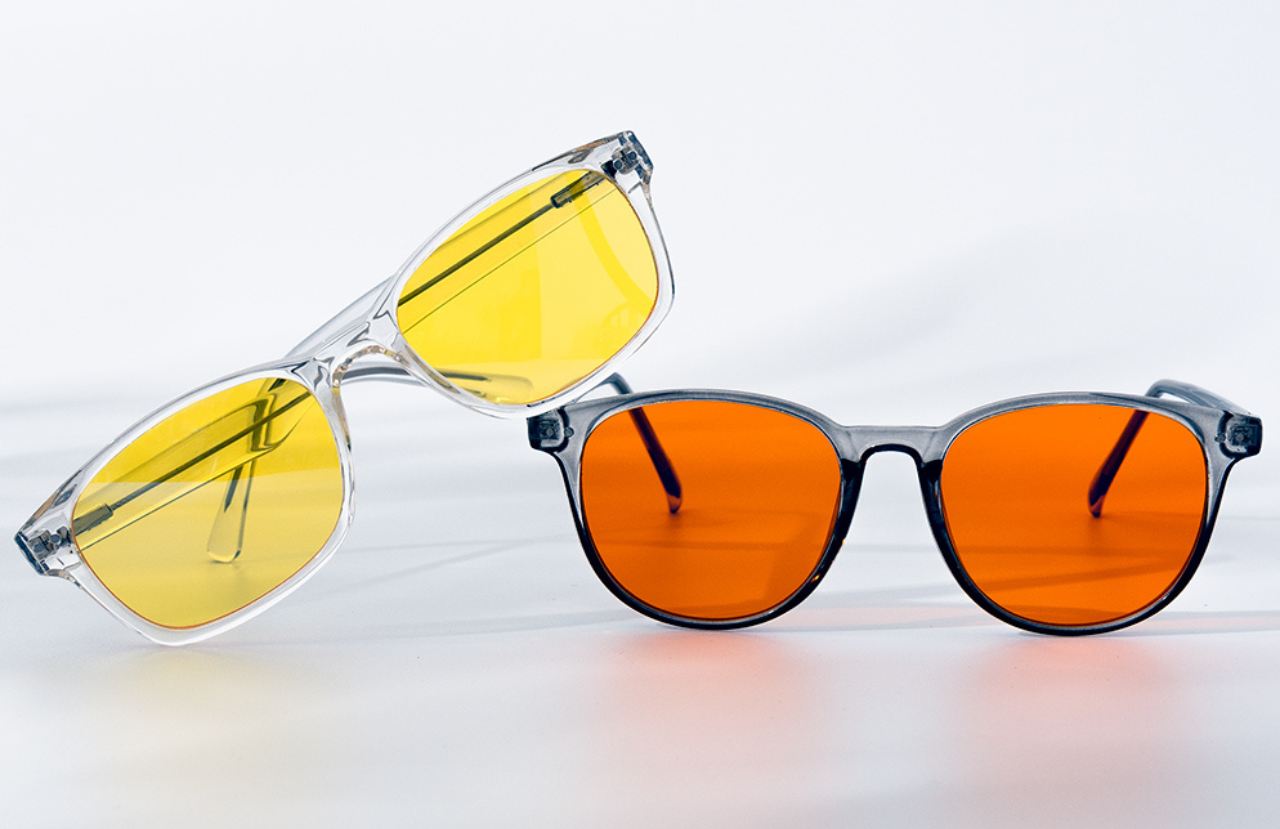Migraines are moderate to severe headaches that are accompanied by feeling sick and increased sensitivity to light and/or sound. Since more than 80% of migraine attacks are caused by or worsened due to light sensitivity, migraine glasses or anti-migraine glasses are an effective solution and they carry none of the side effects of medications.
If you’re sick of migraine attacks, you’re not alone. Almost 20% of women and 7% of men suffer from frequent migraines. In this article, we’ve taken a look at what the research says about anti-migraine glasses and looked at what features the best migraine glasses have. We’ll sum it up by showing you where you can buy affordable migraine glasses in Australia.
How is light related to migraines?

Since light may trigger or worsen the pain, people with migraines may seek the comfort of darkness and isolate themselves from work, friends and family. Although the pain of migraines is bad itself, photophobia(light sensitivity) is crippling. In a research by Harvard students, above 80% of patients reported that their migraine became intense with exposure to white light. In their study, they measured the magnitude of electric signals generated in the retina (eye) and in the cortex (brain) in response to light. Blue light generated the largest signals while green light generated the smallest ones, signaling that blue light is a key culprit for worsening migraines. That’s the reason why anti-migraine glasses help with migraine symptoms.
What causes migraines?
Migraine headaches are just one symptom of a condition called migraine. Doctors and scientists aren’t sure of the exact cause but 2 things are clear:
- Migraines are genetic
- Migraines are related to changes in blood flow to the brain
It’s not just the tendency to get migraines that can be inherited, triggers of migraines are also genetic, such as light, fatigue and weather changes.
For many years, scientists thought that migraines were caused due to changes in blood flow to the brain. However, now it is thought the change in blood flow does contribute to the pain, but doesn’t cause it. Migraines are now believed to start when your nerve cells trigger the trigeminal nerve, by sending nerve signals. The trigeminal nerve is the nerve that gives sensation to your face and head. When this nerve is triggered it releases chemicals such as calcitonin gene-related peptide (CGRP) and triggers the brain and gut to release serotonin. CGRP makes the blood vessels swell, that are lining your brain. This swelling causes pain, which you experience due to neurotransmitters.
The triggering of nerve cells can be caused by a wide range of factors and may differ from person to person.
Common migraine triggers:
Migraines can be triggered by a number of factors, including
- hormone changes,
- stress,
- certain foods,
- skipping meals,
- weather changes and
- sensory input (such as noise, light and smell).
Light is the most common trigger, with up to 60% of migraine attacks being triggered by light. This is many people report that using anti-migraine glasses helps significantly with reducing their frequency and symptoms.
Types of migraines:
If you ever had a migraine and saw strange things such as coloured spots and flashing lights, that was an aura. Migraines with aura are less common - about 1 in 3 people experience an aura with their migraine. Migraines without aura don’t have the flashing light symptoms. It’s possible for you to experience both from time to time.
If you get an aura you may even see unusual shapes or effects that grow in size or move about your vision, such as sparkles or stars, blind spots, tunnel vision or zigzags. An aura may seem frightening at first, but it is not life-threatening.
However, getting frequent migraines can be crippling and affect your productivity and daily functioning. Additionally, taking frequent painkillers to ease the pain leads to side effects such as stomach problems, kidney problems, high blood pressure, fluid retention, and other allergic reactions. This is where anti-migraine glasses come in. Anti-migraine glasses have zero side effects and research has proven them to be incredibly effective at providing relief in more than 90% of patients.
How do anti-migraine glasses work?
Migraine glasses filter out specific wavelengths of light that are responsible for triggering or worsening migraines. White light is made of the 7 colours of the rainbow. The colors range from red light on one end, with the shortest wavelength and to violet on the other end which has the longest wavelength.
People with migraines are often sensitive to bright lights and fluorescent light. The brighter the light, the more painful it is. The blue light from LEDs and screens may be particularly triggering.
The spectrum of light that is the most triggering for migraine patients is the blue light spectrum from 400-500nm. Blue light carries high levels of energy due to its short wavelengths. Research shows that the brain’s visual processing centre (which manages light sensitivity) is hyper-excitable in people who get migraines. Out of all the colors, blue light (from 400-500nm) is particularly triggering because our eyes have special cells called ipRGCs which detect the presence of blue light from the environment. The purpose of these cells is to inform our body of day and night and maintain our circadian rhythm. However, excess blue light (particularly from artificial sources and LEDs) may trigger light sensitivity and pain in around 25% of the population, resulting in light sensitivity and headaches.
What are the best migraine glasses?

Not all migraine glasses are created equal.
There’s a lot of hype surrounding different features that glasses manufacturers promote, whether it’s the lens tint or material.
However, migraine glasses aren’t rocket science, so let’s break it down to help you understand what you indeed.
All migraine glasses do the same thing - filter out the triggering wavelengths of light, which is mainly blue light. However, the quantity that they filter and the specific wavelength they are targeting varies.
Keep in mind that blue light ranges from 400-500 nanometers. The shorter the wavelength, the higher the energy it carries. Thus the lower end of the spectrum (400-455 nanometers) is higher in energy and therefore more triggering than the upper end (455-500 nm).
- To be effective, the first job your migraine glasses need to do is filter the lower spectrum of blue light from the wavelength 400-455 nanometers, completely.
- The second job is filtering wavelengths in the higher end (455-500nm) by at least 50%. The reason why the higher end of the spectrum shouldn’t be filtered completely is because a certain amount of blue light is needed by the body to function properly. (Read more about how blue light helps maintain the body’s circadian rhythm and sleep cycle).
If the glasses were to block the full spectrum of blue light completely, they would be tinted red and would make us feel sleepy, as they are designed to use at night.
- Lastly, 455 nm is the ‘peak’ of harmful light that devices emit. If your migraine glasses have a specific pigment to filter this range, as our DayMax Yellow lenses do, it’s a bonus.
Our DayMax Yellow migraine lenses:

Our DayMax Yellow are the best migraine glasses you’ll find, because they’re designed according to the above 3 requirements to help people who suffer from light sensitivity, migraines and dry eyes.
All our glasses are precision tinted in a lab and each pair is tested using a lab-grade spectrophotometer to verify if it is filtering light correctly. The image below depicts the wavelengths which the DayMax Yellow glasses allow through. You can see that the wavelengths from 380-455 nm are completely blocked. From 455-500nm, the wavelengths are partially blocked.

Still have doubts? Hear what our customers have to say:
“I’m amazed how much my eyes were being strained from using a computer. Before I had awful headaches and tired painful eyes. Now I may have just tired eyes but not to the extent I did before. The yellow shade does take a little getting used to but after a while, I forget that I’m wearing them. Best investment ever” - Darlene Young Y
The best part is that we’re convinced that our glasses are 100% effective. So we give you a free refund, exchange or store credit within 30 days of purchase. So go ahead, try a pair of the best migraine glasses in Australia or learn more about the science behind blue light and headaches.
References:
https://hms.harvard.edu/news/green-light-migraine-relief#:~:text=%E2%80%9CMore%20than%2080%20percent%20of,the%20Department%20of%20Anesthesia%2C%20Critical
https://journals.lww.com/jneuro-ophthalmology/Fulltext/2019/03000/Neurobiology_of_Photophobia.16.aspx





